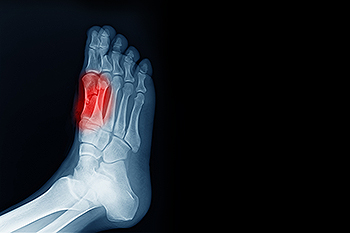Wesley Chapel
(813) 973-3535Call or Text
Forefoot Pain
Tuesday, 11 April 2023 00:00
The forefoot is the front part of the foot that contains ligaments, tendons, muscles, nerves, blood vessels, metatarsal bones, and phalanges. The metatarsal bones are the five long bones between the toe bones, the hindfoot, and the midfoot. There are a variety of conditions that can lead to forefoot pain, including Morton’s neuroma, toe pain, and sesamoiditis. The focus here is on sesamoiditis. Most bones are connected to other bones at joints. Sesamoids are bones embedded in muscle and only connected to tendons. On the bottom of the foot, near the big toe, two small sesamoids help with weight bearing and raising the bones of the big toe. Sesamoiditis happens when these tendons become irritated and inflamed. This is common among runners and dancers. If you suffer from pain in your forefoot, it is suggested that you visit a podiatrist to determine the cause of the pain, whether it’s sesamoiditis, and how to treat it best.
Sesamoiditis is an unpleasant foot condition characterized by pain in the balls of the feet. If you think you’re struggling with sesamoiditis, contact one of our podiatrists of New Tampa Foot & Ankle. Our doctors will treat your condition thoroughly and effectively.
Sesamoiditis
Sesamoiditis is a condition of the foot that affects the ball of the foot. It is more common in younger people than it is in older people. It can also occur with people who have begun a new exercise program, since their bodies are adjusting to the new physical regimen. Pain may also be caused by the inflammation of tendons surrounding the bones. It is important to seek treatment in its early stages because if you ignore the pain, this condition can lead to more serious problems such as severe irritation and bone fractures.
Causes of Sesamoiditis
- Sudden increase in activity
- Increase in physically strenuous movement without a proper warm up or build up
- Foot structure: those who have smaller, bonier feet or those with a high arch may be more susceptible
Treatment for sesamoiditis is non-invasive and simple. Doctors may recommend a strict rest period where the patient forgoes most physical activity. This will help give the patient time to heal their feet through limited activity. For serious cases, it is best to speak with your doctor to determine a treatment option that will help your specific needs.
If you have any questions please feel free to contact our office located in Wesley Chapel, FL . We offer the newest diagnostic and treatment technologies for all your foot and ankle needs.










